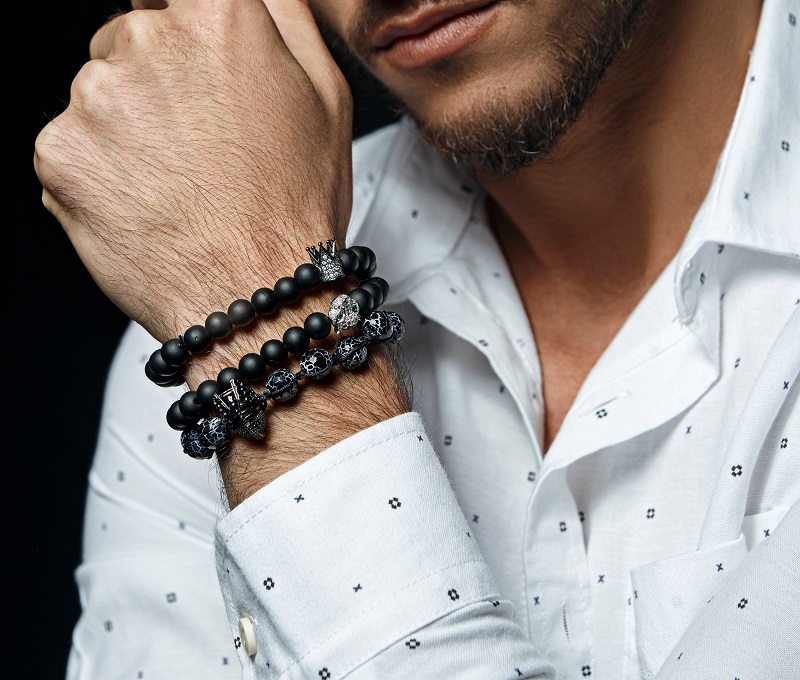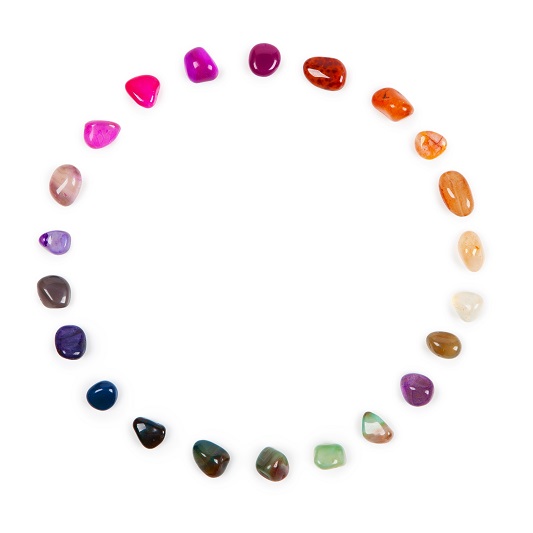Moldavite, gemstone of the week

Malachite, Gemstone of the Week
28th February 2018
Ammolite: Gemstone of the Week
16th March 2018Often referred to as the ‘Bouteille Stone’, Moldavite is an olive-green gemstone. The stone belongs to the Tektite group of minerals, which are best described as natural glass stones. With a beautiful colouring and a vibrant lustre, many people believe that Moldavite was born from the stars. Other than it’s unique appearance, Moldavite is best known for its unusual origin; the stone is thought to have formed from condensed rock vapours shortly after a meteorite impact, thousands of years ago.
Years ago, Moldavite was believed to be an artificial gem. After researchers discovered that the stone was natural, it was then believed to be a type of volcanic obsidian glass. Finally, it became apparent that the stone was a member of the Tektite family, and was given the name ‘Chysolites’. A few years later, the gem was renamed as ‘Moldavite’, after the place it was first discovered – Moldauthein. In this article, we explore Moldavite in more detail.
How to Identify Moldavite
For trained professionals, Moldavite is relatively easy to identify. The chemical composition of the stone contains aluminium oxide and silicon dioxide. The hardness of the stone is fairly high, measuring a 5 on the Mohs scale. Its density is measured at 2.3. Professionals can also identify Moldavite by its refractive index; similar to that of volcanic glass Obsidian, the index can be measured easily with the right equipment. For the untrained eye, identifying Moldavite is a little trickier. In this case, the best way to identify the stone is through its glass-like appearance and olive-green colouring. Sometimes, specimens appear a slightly darker or lighter shade of green. When cut and polished, the stone exhibits a strong lustre; typically, this is accompanied by a rough surface.
Moldavite can sometimes be confused with other minerals that are similar in appearance. The natural glass stone is closely related to the volcanic glass, Obsidian. Popular for use within gemstone jewellery, Obsidian has a range of different trade names such as ‘Snowflake Obsidian’ and ‘Gold-Sheen Obsidian’. For professionals, the differences between Moldavite and Obsidian are clear; however, to the untrained eye, the two can appear almost identical.
Different Colours and Types of Moldavite
Though Moldavite is always green in colour, the exact shade of the specimen can vary. A variety of shades of green are common, ranging from pale green to a deep forest-green. Occasionally, specimens may appear brownish-green; however, these are considered the least desirable. On average, the most desirable colour of Moldavite is a medium green without a brown tint.
The appearance of Moldavite can vary from transparent to opaque. The most valuable specimens are almost completely transparent. Stones of this nature are not only beautiful, they are also extremely rare; therefore, they carry with them a hefty price tag. On average, most of the Moldavite on the gemstone market is opaque with a slight translucency. Completely transparent specimens are referred to as ‘museum grade’ while everything else is considered ‘regular grade’. Museum grade Moldavite also exhibits the unique fern-like pattern. Regular grade specimens are usually darker in colour, and their surface often appears rough and pitted. Unlike other gemstones, Moldavite is rarely treated or enhanced using heat. However, the stone is occasionally fused with other varieties of borosilicate glass to enhance the appearance.
Where is Moldavite Found?
As mentioned previously, the name ‘Moldavite’ derives from ‘Moldauthein’, a town in the Czech Republic where the stone was first discovered. Today, Moldavite is found in various locations worldwide. Notable sources include Germany, Austria, Western Moravia, and Southern and Northwestern Bohemia. Currently, 99% of Moldavite is believed to come from South Bohemia and the remaining 1% from Western Moravia. While the stone is sometimes found in Germany and Austria, these deposits are usually minimal.
Today, the estimated amount of Moldavite in the world is around 275 tons. Years ago, there were many Moldavite mines in action throughout the Czech Republic, all producing the stone on a commercial level. Today, only one mine remains in operation. Experts have estimated that all the gem-quality specimens will be gone within the next ten years.
Healing Properties of Moldavite
Legend suggests that Moldavite was first used to bring good luck to its beholder. Today, many people still consider the gemstone to be a ‘lucky charm’. Thought to bring peace and harmony to relationships, the stone is also popular amongst married couples. Additionally, Moldavite is believed to aid fertility and ease unpleasant symptoms associated with pregnancy; with this in mind, a good-quality piece of Moldavite can be beneficial to those trying to conceive or in their first trimester of pregnancy. The olive-green stone is believed to help with a range of other physical ailments, too. Most notably, the gem is thought to alleviate asthma, gout, and various allergies. Those suffering from the flu or a common cold can also use Moldavite to relieve their symptoms.
In Summary
Vitreous Moldavite is popular all around the world. Today, the most notable deposits of the stone are found in South Bohemia, though specimens are also found in Western Moravia, Germany, and Austria. Loved for its vibrant green colouring and glass-like appearance, good-quality Moldavite is often used in designer jewellery. Whether you’re hoping to use the stone for its benefits within crystal healing or you’re looking for a beautiful new addition to your jewellery collection, purchase a good-quality piece of Moldavite to reap the benefits.




